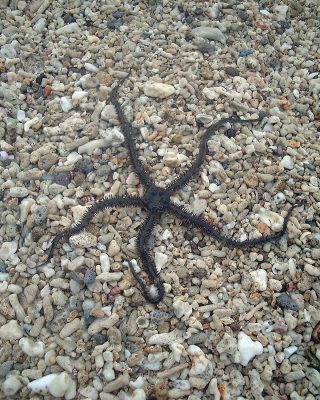×


We have detected your country as:
Please click here to go to the USA website or select another country from the dropdown list.
 An international research team, led by the Technion-Israel Institute of Technology, has discovered how a beautiful, brainless brittle star can create material similar to tempered glass underwater at ambient conditions. The findings may open new bio-inspired routes for toughening brittle ceramics in various important applications.
An international research team, led by the Technion-Israel Institute of Technology, has discovered how a beautiful, brainless brittle star can create material similar to tempered glass underwater at ambient conditions. The findings may open new bio-inspired routes for toughening brittle ceramics in various important applications.
The Technion researchers uncovered the unique protective mechanism of highly resistant lenses located on the arms of ophiocoma wendtii, a coral reef-dwelling brittle starfish. Made of chalk, the lenses are powerful and accurate, and the deciphering of their crystalline and nanoscale structure has occupied lead Technion researcher Professor Boaz Pokroy and his team for the past three years.
Prof. Pokroy researches materials created by living organisms and produces analogous synthetic materials using methods inspired by nature. Mollusk shells, pearls, bones and turtle shells are some examples of biominerals.
“What is impressive about biominerals is that they are made from materials easily available to the organism, for example, chalk,” said Prof. Pokroy. “Engineers would never choose chalk as a durable building material, but nature does—and successfully—using different toughening and strengthening strategies.”
“Ophiocoma wendtii lenses are created in the open sea, not in a laboratory, and in effect we have discovered a strategy for making brittle material much more tough and durable under natural conditions,” explained Prof. Pokroy. “It is ‘crystal engineering’ and tempering without heating and quenching—a process that could be very useful in materials science and engineering.”
For the sake of comparison, tempered glass and pre-stressed concrete are produced by exerting pressure that compresses the material and leaves it more compact than its natural state. Glass tempering, for example, is performed by heating and then rapidly cooling the material. In this process, the outside of the material cools more quickly than the inside and thereby compresses the inside.
The Technion researchers discovered that the crucial stage in the process of lens formation is the transition from the amorphous phase—the phase between liquid and solid—to the crystalline phase. At this stage, calcite nanoparticles, which are richer in magnesium and characterized by being more compact on an atomic scale, separate from the rest of the material. Magnesium-rich particles press on the inner part of the lens as it crystallizes, and “temper” it into a clear and tougher crystalline material.
Scientists and engineers can now try to utilize this newly discovered biostrategy in toughening and strengthening synthetic ceramic materials utilized in various applications that span from optical lenses to automotive turbochargers and even biomaterial implants.
Source: Excerpt of article by Edgar Asher, Ashernet
Photo Credit: www.freeimages.com
All logos and trademarks in this site are property of their respective owner. All other materials are property of Bridges for Peace. Copyright © 2024.
Website Site Design by J-Town Internet Services Ltd. - Based in Jerusalem and Serving the World.